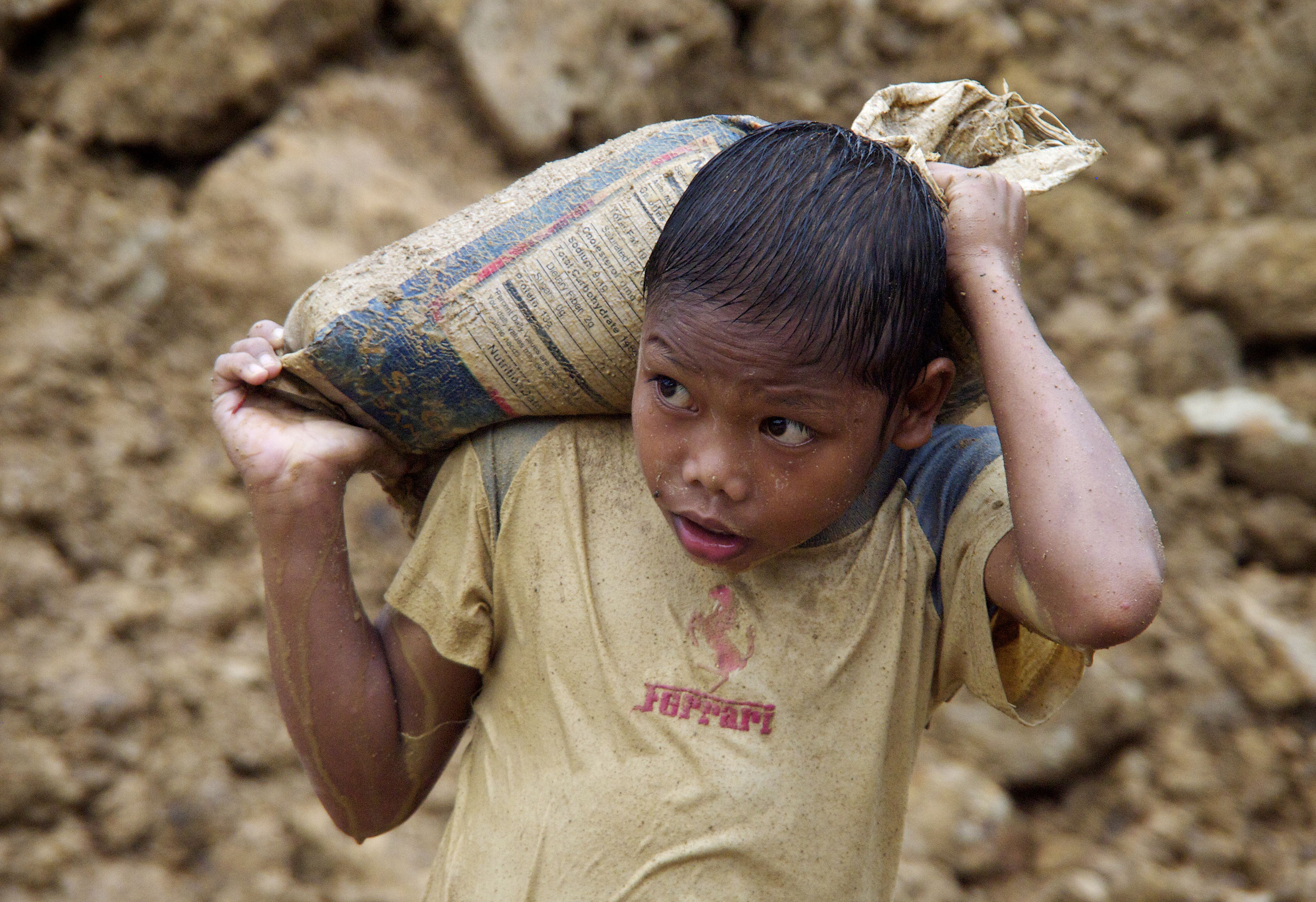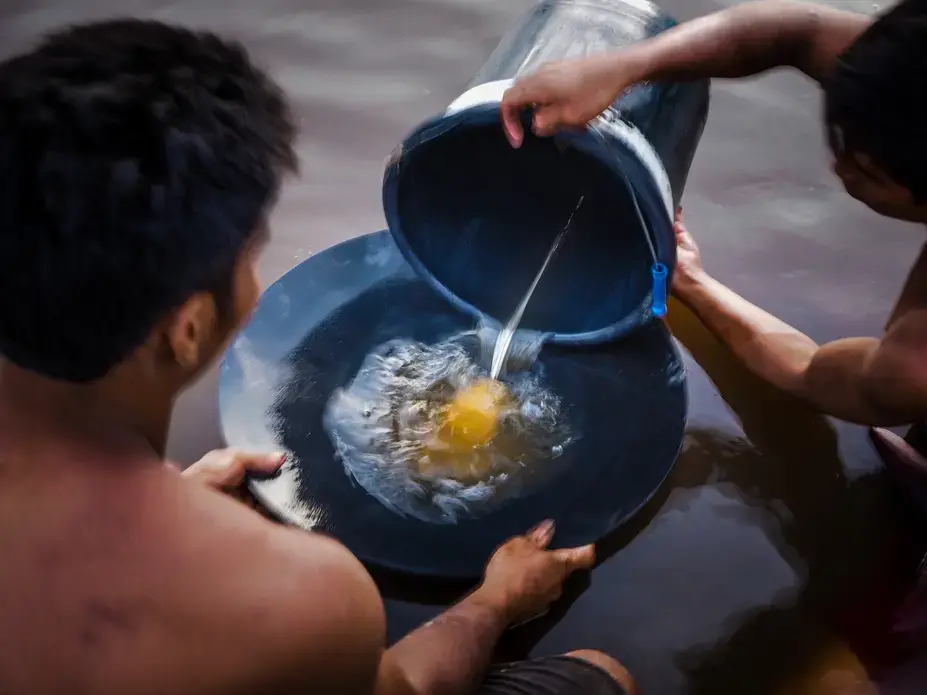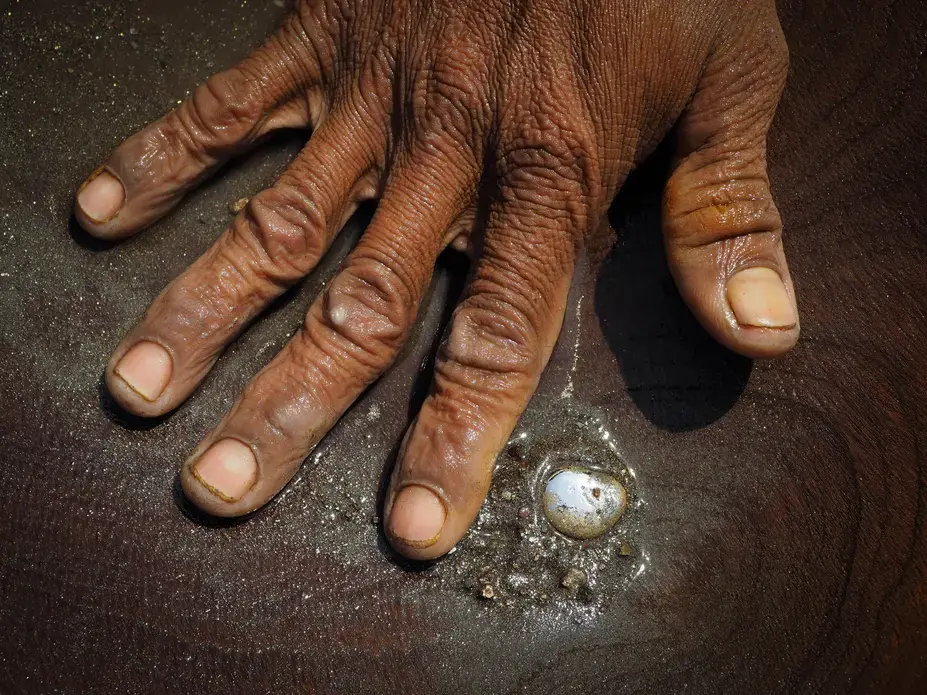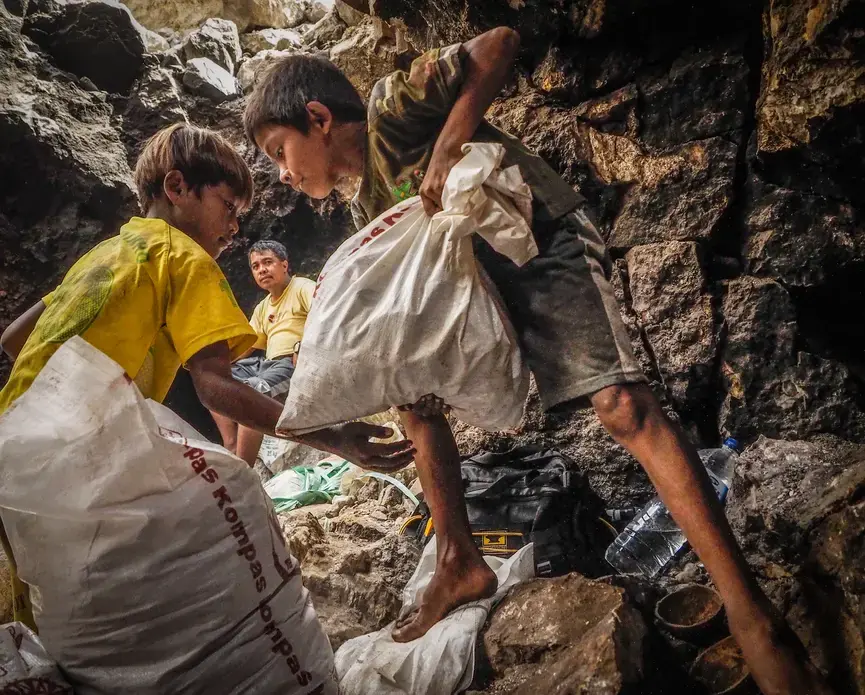For small-scale gold miners in the Philippines and Indonesia, separating gold from rock and sand is primitive, tedious and often dangerous work. Miners, including teenagers and children, are often exposed to mercury, which is used to separate gold particles from crushed rock and sludge. Mercury can be absorbed through the skin, ingested in food and water, or inhaled from vapors, is highly toxic. It can cause a host of physical problems, including nerve and brain damage.
Runoff containing mercury pollutes the ground water and the rivers, ultimately contaminating fish and other food sources for Filipinos.
When the gold ore is contained in chunks of rocks, children often are used to break the rocks into smaller pieces. Young children haul buckets and bags of crushed rock to the ball mills—homemade contraptions outfitted with motors, pulleys and large barrels. The rock is tumbled in the barrels—sometimes with a mixture of mercury, occasionally with cyanide—until it's reduced to a sluice the consistency of runny cement.
Processors pour the sluice into large shallow pans and add mercury. As they swirl the slurry, the mercury binds to the gold and sinks to the bottom of the pan. The sludge is drained off until a film of gold mixed with mercury remains at the bottom of the pan.
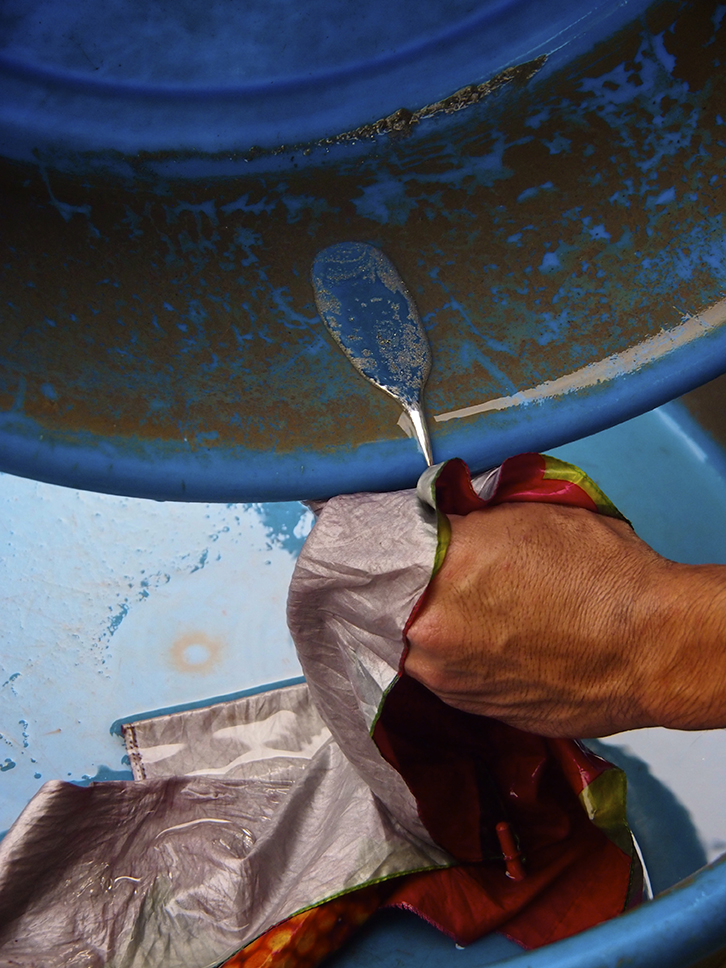
Education Resource
Larry C. Price Reports on Small-scale Gold Mining
Photojournalist Larry C. Price traveled to the Philippines and Indonesia to document the use of...


